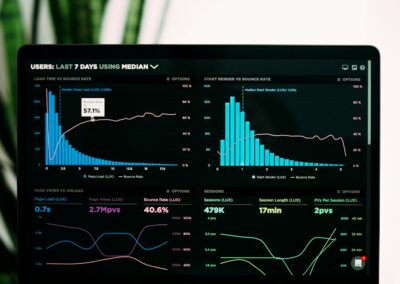Building a Comprehensive Threat Profile
Understanding the Importance of Threat Intelligence
In today’s digital landscape, businesses face an ever-evolving array of cyber threats. Effective threat intelligence is essential for building a comprehensive threat profile, enabling organizations to anticipate, identify, and mitigate potential risks. For business executives, mid-level managers, and entrepreneurs in regions such as Saudi Arabia, UAE, Riyadh, and Dubai, leveraging advanced threat intelligence practices is critical to safeguarding their operations and ensuring long-term success.
Threat intelligence involves collecting, analyzing, and utilizing data from diverse sources to understand the threat environment. This intelligence helps organizations stay ahead of cybercriminals by providing insights into potential attack vectors, threat actors, and emerging trends. By adopting best practices for collecting and processing threat intelligence, businesses can enhance their cybersecurity posture and reduce the likelihood of successful cyberattacks.
Effective threat intelligence not only protects sensitive data but also ensures business continuity. For instance, understanding the tactics, techniques, and procedures (TTPs) used by cybercriminals allows organizations to implement proactive measures to defend against potential attacks. In the Middle East, where technological advancements and digital transformations are rapidly taking place, robust threat intelligence practices are paramount to maintaining a secure and resilient digital infrastructure.
Collecting Threat Intelligence from Diverse Sources
Collecting threat intelligence from a wide range of sources is fundamental to building a comprehensive threat profile. Sources can include open-source intelligence (OSINT), commercial threat intelligence services, internal network data, and information shared by industry partners and cybersecurity communities. Combining data from these sources provides a holistic view of the threat landscape, enabling more accurate and actionable insights.
Open-source intelligence (OSINT) involves gathering information from publicly available sources such as social media, blogs, forums, and news websites. This type of intelligence can reveal valuable insights into emerging threats and threat actors’ activities. Commercial threat intelligence services offer curated feeds and reports from dedicated cybersecurity firms, providing detailed analyses and threat indicators to enhance an organization’s security defenses.
Internal network data, including logs, alerts, and incident reports, offers a unique perspective on the specific threats targeting an organization. By integrating internal data with external threat intelligence, businesses can identify patterns and correlations that may indicate ongoing or potential attacks. Collaboration with industry partners and participation in cybersecurity information-sharing communities further enriches threat intelligence by enabling organizations to share threat data, best practices, and defensive strategies.
Processing and Analyzing Threat Intelligence
Once collected, threat intelligence must be processed and analyzed to derive actionable insights. This involves filtering out noise, correlating data points, and prioritizing threats based on their relevance and potential impact. Advanced analytical techniques, including machine learning and artificial intelligence, can significantly enhance the efficiency and accuracy of this process.
Filtering and normalizing data are critical first steps in processing threat intelligence. This ensures that only relevant and high-quality information is analyzed, reducing the risk of false positives and enabling security teams to focus on genuine threats. Correlation and contextualization involve linking related data points to identify patterns and trends, providing a clearer understanding of the threat landscape.
Prioritizing threats based on their severity and potential impact allows organizations to allocate resources effectively. For example, threats targeting critical assets or exploiting known vulnerabilities should be addressed promptly. Leveraging machine learning and artificial intelligence can automate the analysis process, enabling faster and more accurate threat detection and response. These technologies can identify anomalies, predict potential attack vectors, and recommend appropriate mitigation strategies.
Implementing Effective Threat Intelligence Practices
Integrating Threat Intelligence into Security Operations
To maximize the benefits of threat intelligence, it must be seamlessly integrated into an organization’s security operations. This involves incorporating threat intelligence into existing security tools and processes, ensuring that security teams have access to up-to-date and actionable insights. Effective integration enhances threat detection, incident response, and overall cybersecurity resilience.
One approach to integration is the use of threat intelligence platforms (TIPs). TIPs aggregate and manage threat data from various sources, providing a centralized repository for analysis and dissemination. These platforms can automate data collection, normalization, and correlation, streamlining the threat intelligence process and improving operational efficiency.
Integrating threat intelligence with security information and event management (SIEM) systems allows for real-time monitoring and alerting. SIEM systems can correlate threat intelligence with internal network data to detect suspicious activities and generate alerts for further investigation. By incorporating threat intelligence into incident response playbooks, organizations can ensure that security teams have the information needed to respond quickly and effectively to incidents.
Training and Empowering Security Teams
Training and empowering security teams to leverage threat intelligence effectively is crucial for enhancing cybersecurity. Regular training sessions help security professionals stay updated on the latest threat trends, tools, and techniques. This ensures that they can interpret threat intelligence accurately and apply it to strengthen the organization’s defenses.
Executive coaching services focused on cybersecurity can play a pivotal role in developing leadership skills and fostering a security-centric culture. Coaching can help executives and managers understand the importance of threat intelligence and how to integrate it into strategic decision-making. By promoting a top-down approach to cybersecurity, organizations can ensure that threat intelligence is prioritized and supported at all levels.
Empowering security teams with the right tools and resources is equally important. Providing access to advanced threat intelligence platforms, machine learning models, and analytical tools enables security professionals to perform their roles more effectively. Encouraging collaboration and information sharing within the organization also enhances the collective knowledge and capabilities of the security team.
Continuous Improvement and Adaptation
Threat intelligence is not a one-time effort but an ongoing process that requires continuous improvement and adaptation. Regularly reviewing and updating threat intelligence practices ensures that organizations remain resilient against evolving threats. This involves assessing the effectiveness of current strategies, identifying areas for improvement, and incorporating feedback from security teams.
Staying informed about emerging threats and trends is essential for maintaining a robust threat intelligence program. This includes monitoring threat intelligence feeds, participating in cybersecurity forums, and attending industry conferences. By staying ahead of the curve, organizations can anticipate new threats and adjust their defenses accordingly.
Adopting a proactive and adaptive approach to threat intelligence enhances an organization’s overall cyber resilience. This means not only responding to threats but also anticipating and preventing them. By continuously refining their threat intelligence practices, organizations can ensure that they are well-equipped to navigate the complex and dynamic cybersecurity landscape.
Conclusion
Effective threat intelligence is a cornerstone of robust cybersecurity for businesses in Saudi Arabia, UAE, Riyadh, Dubai, and beyond. By adopting best practices for collecting and processing threat intelligence, organizations can build comprehensive threat profiles that enhance their ability to detect, prevent, and respond to cyber threats. Integrating threat intelligence into security operations, training and empowering security teams, and continuously improving practices are essential steps toward achieving long-term cyber resilience. In a world where cyber threats are constantly evolving, staying informed and proactive is the key to safeguarding digital assets and ensuring business success.
—
#threatintelligence #cybersecurity #datasecurity #businesssuccess #SaudiArabia #UAE #Riyadh #Dubai #ArtificialIntelligence #Blockchain #GenerativeAI #leadershipskills #executivecoaching


























